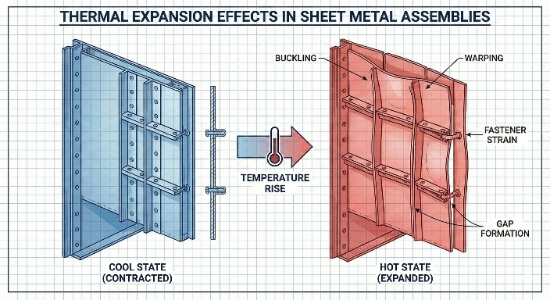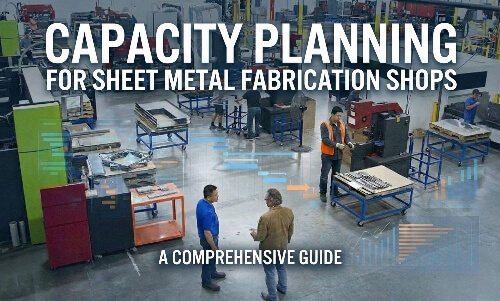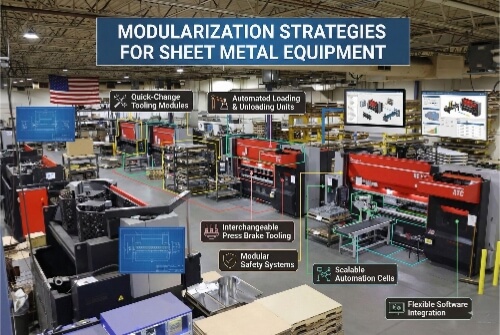في كل يوم، يعتمد عدد لا يحصى من الآلات والأجهزة على النوابض لتعمل. بدءًا من نقرة قلمك إلى نظام التعليق السلس في سيارتك، تلعب النوابض دورًا خفيًا ولكنه حاسم في الأنظمة الميكانيكية. وغالبًا ما يعاني المهندسون والمصنعون في اختيار نوع الزنبرك المناسب، مما يؤدي إلى تأخير المشروع وزيادة التكاليف.
تأتي النوابض في ثلاثة أنواع رئيسية: النوابض الحلزونية والورقية والقرصية. ويؤدي كل نوع وظائف فريدة من نوعها مصممة خصيصًا لتصميمها وقدراتها على تحمل الأحمال. فالنوابض الحلزونية تقوم بالضغط أو التمدد لامتصاص القوة، بينما تقوم النوابض الورقية بتوزيع الوزن على مساحة أوسع، وتوفر النوابض القرصية حلاً مدمجاً لتخزين الطاقة وإطلاقها.
هل تريد معرفة نوع الزنبرك الذي يناسب استخدامك المحدد؟ إن عالم النوابض أكثر عمقًا مما يدركه معظم الناس، حيث يقدم كل نوع منها مزايا فريدة للاستخدامات الصناعية المختلفة.
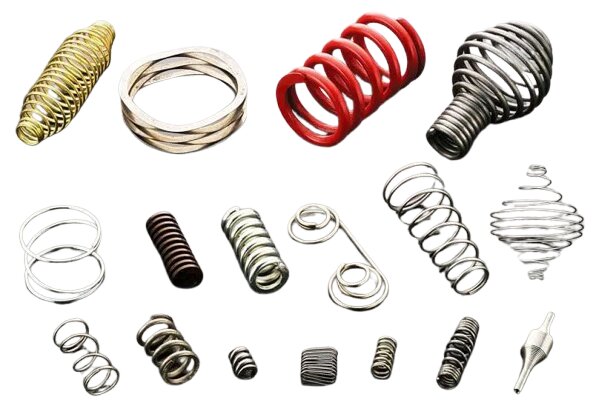
مبدأ الربيع
تعتبر الزنبركات مكونات أساسية في العديد من الأنظمة الميكانيكية. ومبدأ تشغيلها بسيط وقوي في آن واحد.
يخزن الزنبرك الطاقة عند تطبيق القوة ويطلقها بمجرد إزالتها. وعادةً ما يعود الزنبرك إلى شكله الأصلي بغض النظر عن نوعه عند إزالة الحمل. هذه الخاصية هي ما يجعل النوابض ذات قيمة كبيرة في مختلف التطبيقات.
يحكم قانون هوك وظيفة الزنبرك. يحدد هذا القانون العلاقة بين القوة المطبقة ومرونة الزنبرك. ينص قانون هوك على أن القوة اللازمة لضغط الزنبرك أو مده تتناسب طردياً مع الإزاحة.
من الناحية الرياضية، يُعبَّر عن قانون هوك على النحو التالي:
F = -kX
أين:
- F هي القوة المؤثِّرة على الزنبرك
- X هي إزاحة الزنبرك
- k هو ثابت الزنبرك
تشير الإشارة السالبة في المعادلة إلى أن قوة الاستعادة معاكسة لاتجاه الإزاحة. هذا يعني أن تمدد الزنبرك يسحب الزنبرك للخلف، وعندما تضغطه يدفعه للخارج.
ثابت الزنبرك، k، أمر بالغ الأهمية. فهو يعتمد على نوع الزنبرك ويظهر صلابته. تعني قيمة k الأعلى أن الزنبرك أكثر صلابة ويتطلب قوة أكبر للضغط أو التمدد.
يسمح هذا المبدأ البسيط للنوابض بأداء وظائف مختلفة:
- تخزين الطاقة وإطلاقها
- توفير المقاومة
- امتصاص الصدمات
- حافظ على التوتر
أنواع الينابيع المختلفة وتطبيقاتها
يقوم المهندسون بتصميم الأنظمة الميكانيكية باستخدام ثلاث فئات رئيسية من النوابض: النوابض الحلزونية والنوابض الورقية والنوابض القرصية. وتتمتع كل فئة بنقاط قوة فريدة لتطبيقات مختلفة، ويمكن أن يعني اختيار النوع المناسب الفرق بين نجاح المشروع وفشله.
الفئة الأولى: النوابض الحلزونية
الينابيع الحلزونية هي أكثر الأنواع شيوعاً التي ستصادفها. وهي عبارة عن أسلاك ملفوفة تشبه الدرج الحلزوني. دعونا نفصلها:
1. نوابض الضغط
تدفع هذه النوابض للخلف عند الضغط عليها. إنهم أحصنة العمل في عالم الزنبرك. ستجدها في الأقلام، ومعلقات السيارات، وحتى المراتب. عندما تضغط على زنبرك الضغط، فإنه يخزن الطاقة. حرره، فيرتد مرة أخرى.
2. نوابض التمديد
تقوم نوابض التمديد بعكس نوابض الضغط. فهي مصممة لسحب الأشياء معًا. تبدأ هذه النوابض في الانضغاط والتمدد عند استخدام القوة. غالبًا ما تستخدم مفصلات الأبواب، والترامبولينات، وأبواب المرآب نوابض التمديد. إنها رائعة لخلق التوتر والمساعدة في إعادة الأشياء إلى مكانها.
3. نوابض الالتواء
تلتف نوابض الالتواء حول محور. إنها الأبطال المجهولون في العديد من الأجهزة المفصلية. عندما تقوم بفتح مشبك الغسيل، فأنت تعمل ضد زنبرك الالتواء. هذه النوابض ضرورية أيضاً في أبواب السيارات، حيث تمنعها من التأرجح بعيداً جداً.
4. نوابض لولبية
النوابض الحلزونية هي لفائف مسطحة تخزن الطاقة عند لفها. وهي القوة الكامنة وراء الألعاب التي تعمل بالرياح والساعات الميكانيكية. عندما ينفك الزنبرك، فإنه يطلق الطاقة ببطء وثبات، مما يجعله مثاليًا لآليات التوقيت وتشغيل الأجهزة الصغيرة.
الفئة الثانية: الينابيع الورقية
النوابض الورقية عبارة عن شرائط مسطحة من المعدن، وغالباً ما تكون مكدسة معاً. إنها قوية ويمكنها تحمل الأحمال الثقيلة. دعنا نستكشف الأنواع المختلفة:
1. زنبرك ورقي بيضاوي الشكل
أما النوابض ذات الأوراق البيضاوية فهي بيضاوية الشكل. وهي نادرة هذه الأيام ولكنها كانت شائعة في العربات القديمة التي تجرها الخيول. توفر هذه النوابض قيادة سلسة من خلال ثنيها بوزن أقل من الوزن المطلوب. وهي لا تزال تُستخدم في بعض المركبات المتخصصة حيث تكون الراحة هي المفتاح.
2. زنبرك نصف بيضاوي الشكل
النوابض شبه الإهليلجية هي أكثر النوابض الورقية شيوعاً. وهي تشبه قوس الرامي. ستجدها في العديد من الشاحنات وسيارات الدفع الرباعي. هذه النوابض صلبة ويمكنها تحمل الأحمال الثقيلة مع توفير بعض المرونة لقيادة أكثر سلاسة.
3. زنبرك ربع بيضاوي الشكل
الزنبركات الإهليلجية الربعية هي نصف حجم الزنبركات شبه الإهليلجية. وغالباً ما تستخدم في أزواج. أحد طرفيها ثابت، بينما الطرف الآخر حر الحركة. هذه النوابض رائعة للشاحنات الخفيفة وبعض السيارات الرياضية. فهي توفر المساحة مع توفير دعم جيد في نفس الوقت.
4. زنبرك أوراق بيضاوي الشكل ثلاثي الأرباع
تجمع الزنبركات الإهليلجية ثلاثية الأرباع بين الزنبرك شبه الإهليلجي والزنبرك الإهليلجي الربعي. وهي ليست شائعة ولكنها توفر توازناً فريداً بين القوة والمرونة. تستخدمها بعض السيارات الكلاسيكية للحصول على قيادة أكثر ليونة.
5. الزنبرك الورقي المستعرض
تعمل النوابض الورقية المستعرضة بعرض السيارة وليس بطولها. وتستخدم في بعض السيارات الرياضية وسيارات السباق. تساعد هذه النوابض على تقليل الوزن ويمكنها تحسين التحكم. إنها طريقة ذكية لتوفير المساحة في تصميم السيارة.
الفئة الثالثة نوابض الأقراص
الزنبركات القرصية، المعروفة أيضاً باسم غسالات بيلفيل، فريدة من نوعها. وهي عبارة عن أقراص مسطحة مستديرة ذات شكل مخروطي طفيف. يمكن لهذه النوابض التعامل مع الأحمال العالية في المساحات الصغيرة. دعونا نلقي نظرة على الأصناف:
1. زنبرك قرص بيلفيل ديسك سبرينغ
نوابض قرص بيلفيل هي المعيار في هذه الفئة. وهي تشبه الوعاء الضحل أو الصحن. عند ضغطها، فإنها تكون مسطحة. يمكن لهذه النوابض دعم الأحمال الثقيلة مع الحد الأدنى من الحركة. وغالباً ما يتم استخدامها في الصمامات والقوابض والوصلات المثبتة بمسامير حيث يكون الشد الدقيق أمراً بالغ الأهمية.
2. زنبرك القرص المنحني الزنبركي
تتميز نوابض الأقراص المنحنية بمنحنى أكثر وضوحًا من نوابض بيلفيل القياسية. يسمح هذا التصميم بانحراف أكثر أهمية ومنحنى خطي أكثر للقوة والانحراف. وهي رائعة للتطبيقات التي تتطلب ضغطاً أولياً أكثر ليونة متبوعاً باستجابة أكثر صلابة.
3. نابض القرص المشقوق
تحتوي نوابض الأقراص المشقوقة على قطع شعاعية حول محيطها. تقلل هذه الفتحات من صلابة الزنبرك وتسمح بانحراف أكبر. وهي مفيدة في التطبيقات التي تتطلب قوة الزنبرك القرصي ولكن مع مزيد من المرونة. ستجدها في قوابض السيارات والآلات الصناعية.
4. نوابض قرص الموجة
تتميز النوابض القرصية الموجية بشكل متموج بدلاً من الشكل المخروطي. وهي توفر قوة أكثر اتساقًا على مدى حركتها. هذه الزنبركات ممتازة للحفاظ على ضغط ثابت في التجميعات الدوارة أو موانع التسرب. وغالبًا ما تستخدم في المحامل وموانع تسرب المضخات.
المواد الشائعة المستخدمة في تصنيع الزنبرك
يمكن أن يؤدي اختيار المواد إلى تحسين أداء الزنبرك أو تعطله. لنلقِ نظرة على المواد الأكثر شيوعاً وسبب استخدامها.
سبائك الصلب
سبائك الصلب هي الخيار المفضل لمعظم النوابض. فهي قوية ومتينة ورخيصة نسبياً. تقدم السبائك المختلفة خصائص مختلفة:
يعتبر الفولاذ المصنوع من الكروم والسيليكون خياراً شائعاً. إنه صعب ويقاوم التعب، مما يجعله مثاليًا للتطبيقات عالية الإجهاد مثل نوابض الصمامات في محركات السيارات.
فولاذ الكروم والفاناديوم هو سبيكة قياسية أخرى. ومن المعروف عنه أنه يحافظ على قوته في درجات الحرارة العالية، لذا فهو يستخدم في النوابض التي تعمل في البيئات الحارة، مثل تلك الموجودة في الأفران الصناعية.
يُستخدم سلك الموسيقى، وهو فولاذ عالي الكربون، للنوابض الصغيرة. وهو صلب بالنسبة لحجمه، مما يجعله مثالياً للنوابض الدقيقة في الساعات أو الأجهزة الإلكترونية الصغيرة.
الفولاذ المقاوم للصدأ
الزنبركات المصنوعة من الفولاذ المقاوم للصدأ بطلة ضد التآكل. إنها الخيار الأفضل للبيئات الرطبة أو المالحة، مثل المعدات البحرية أو الآلات الخارجية.
يستخدم الفولاذ المقاوم للصدأ من النوع 302 على نطاق واسع. وهو يوفر توازنًا جيدًا بين القوة ومقاومة التآكل، مما يجعله مثاليًا للنوابض في معدات تجهيز الأغذية أو الأجهزة الطبية.
يكتب 316 فولاذ مقاوم للصدأ أكثر مقاومة للتآكل. يُستخدم في البيئات الكيميائية القاسية أو حيثما تكون هناك حاجة إلى نظافة شديدة، مثل تصنيع المستحضرات الصيدلانية.
المواد البلاستيكية والمركبة
النوابض البلاستيكية خفيفة الوزن ومقاومة للتآكل. كما أنها غير موصلة للكهرباء، مما يجعلها مفيدة في الأجهزة الإلكترونية أو حيثما تتسبب النوابض المعدنية في حدوث تداخل.
النايلون هو بلاستيك عادي للنوابض. إنه صعب ويمكنه تحمل الضغط المتكرر بشكل جيد. قد تجد نوابض النايلون في الألعاب أو الأجهزة الميكانيكية خفيفة الوزن.
تكتسب مركبات الألياف الزجاجية شعبية متزايدة. فهي قوية وخفيفة الوزن ولا تتآكل. تُستخدم هذه النوابض في التطبيقات الفضائية حيث كل أونصة مهمة.
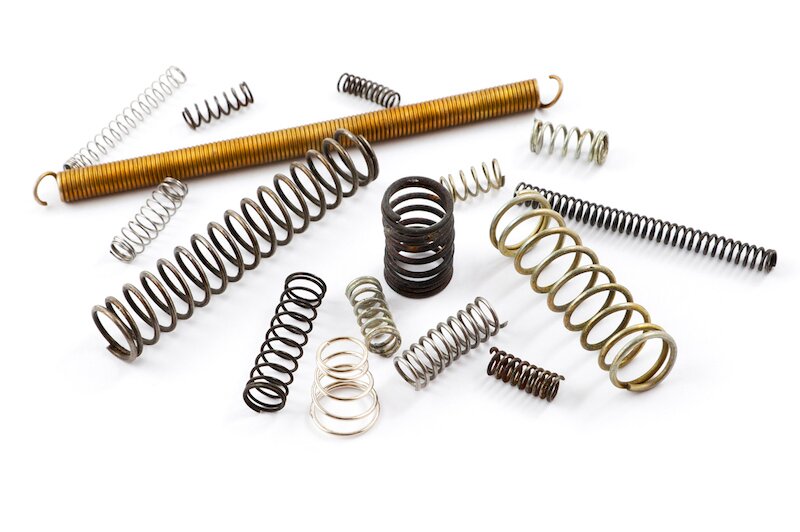
فوائد الينابيع
الزنبركات أكثر من مجرد لفائف معدنية. إنها حلول للمشاكل في عالم الهندسة. دعونا نستكشف لماذا تعتبر النوابض ذات قيمة كبيرة.
تخزين الطاقة
تتفوق الزنبركات في تخزين الطاقة. فعندما تقوم بضغط أو تمديد زنبرك، فإنه يحتفظ بتلك الطاقة. إنها مثل بطارية مصغرة، جاهزة لإطلاق طاقتها عند الحاجة. هذه القدرة تجعل الزنبرك ضروريًا في العديد من الأجهزة الميكانيكية.
امتصاص الصدمات
الزنبركات هي ممتصات طبيعية للصدمات. حيث يمكنها امتصاص الصدمات المفاجئة وتوزيعها بمرور الوقت، مما يحمي الأجزاء الأخرى من الماكينة أو الهيكل من التلف.
التحكم في القوة
تسمح النوابض بالتحكم الدقيق في القوة في العديد من التطبيقات. ومن خلال اختيار معدل الزنبرك الصحيح، يمكن للمهندسين ضبط مقدار القوة المطبقة في النظام.
كفاءة الفضاء
يمكن للزنبركات أن توفر الكثير من الوظائف في مساحة صغيرة. يمكنها توفير القوة أو الحركة أو تخزين الطاقة دون أن تشغل مساحة كبيرة.
انظر داخل الساعة. تتحكم النوابض الصغيرة في حركة التروس بدقة مذهلة. وعلى نطاق أكبر بكثير، يمكن للزنبركات في الآلات الصناعية أن تمارس أطنانًا من القوة بينما تشغل مساحة صغيرة نسبيًا.
براعه
تأتي النوابض بأشكال وأحجام لا حصر لها. ويعني هذا التنوع أنه من المحتمل أن يكون هناك حل زنبركي لأي تحدٍ ميكانيكي تقريبًا.
عيوب الينابيع
بينما تقدم النوابض العديد من الفوائد، إلا أنها لا تخلو من العيوب. يساعد فهم هذه القيود المهندسين على استخدام النوابض بشكل أكثر فعالية. دعونا نلقي نظرة على بعض التحديات التي تمثلها النوابض.
البلى والتعب
يمكن أن تتآكل الزنبركات بمرور الوقت. فكل ضغط أو تمديد يسبب كميات ضئيلة من الإجهاد في المادة. ويمكن أن يؤدي هذا الإجهاد المتكرر إلى تآكل المعدن. وفي النهاية، قد ينكسر الزنبرك أو يفقد قوته.
حساسية درجة الحرارة
العديد من النوابض حساسة للتغيرات في درجات الحرارة. فالحرارة يمكن أن تغير خصائص الزنبرك، مما يجعله أكثر ليونة أو أضعف، والبرودة الشديدة يمكن أن تجعله هشاً.
مشكلات الرنين
يمكن أن يتردد صدى الزنبرك عند ترددات محددة. عندما يحدث ذلك، يتأرجح الزنبرك بسعة متزايدة. يمكن أن يؤدي ذلك إلى حركة زائدة أو ضوضاء أو حتى فشل.
السلوك غير الخطي
لا تتصرف الزنبركات دائمًا بطريقة خطية تمامًا. فعندما تنضغط أو تتمدد، يمكن أن تتغير العلاقة بين القوة والإزاحة. يمكن أن يؤدي عدم الخطية هذا إلى صعوبة التحكم الدقيق.
متطلبات المساحة
في حين أن النوابض يمكن أن تكون موفرة للمساحة، إلا أنها لا تزال بحاجة إلى مساحة للعمل. يحتاج زنبرك الضغط إلى مساحة للضغط، ويحتاج زنبرك التمديد إلى مساحة للتمدد. وهذا يمكن أن يمثل تحديًا في التصميمات المدمجة للغاية.
خاتمة
الزنبركات ضرورية في الهندسة. فهي موجودة في كل شيء من الساعات إلى الآلات الثقيلة. فهي تخزن الطاقة وتمتص الصدمات وتتحكم في القوى. ومع تقدم التكنولوجيا، ستجد النوابض استخدامات جديدة. في المرة القادمة التي تستخدم فيها جهازًا محملًا بنابض، فكر في الهندسة الذكية وراءه.
بالإضافة إلى تصنيع الزنبرك، نقدم حلول تصنيع مخصصة شاملة لجميع احتياجاتك. بفضل المعدات المتطورة والفريق التقني المحترف، يمكننا تلبية متطلباتك المتنوعة في التصنيع باستخدام الحاسب الآلي, تصنيع الصفائح المعدنيةوأكثر من ذلك. اخترنا لجعل عملية التصنيع الخاصة بك أكثر كفاءة وسلاسة.
الأسئلة الشائعة
ما الفرق بين نوابض الضغط ونوابض التمديد؟
تدفع نوابض الضغط للخلف عند الضغط عليها. تُستخدم في المراتب ومعلقات السيارات. أما نوابض التمديد فتقاوم السحب. ستجدها في أبواب المرآب والترامبولين. تصبح نوابض الضغط أقصر عند استخدامها، بينما تصبح نوابض التمديد أطول.
كيف يمكنني اختيار الزنبرك المناسب لاستخدامي؟
ضع في اعتبارك هذه العوامل:
- القوة اللازمة
- المساحة المتاحة
- بيئة التشغيل
- تواتر الاستخدام
- معدل الزنبرك (القوة لكل وحدة ضغط/تمدد)
- ملاءمة المواد
بالنسبة للاحتياجات المعقدة، استشر مصنع أو مهندس زنبرك.
هل يمكن إعادة تدوير الينابيع؟
معظم النوابض المعدنية، خاصة الفولاذية، قابلة لإعادة التدوير. يتم صهرها لصنع منتجات معدنية جديدة. قد تكون النوابض البلاستيكية أكثر صلابة لإعادة التدوير. راجع مركز إعادة التدوير المحلي لمعرفة الإرشادات. عند الإمكان، افصل النوابض عن المواد الأخرى قبل إعادة التدوير.
ما هي معايير السلامة للنوابض في الاستخدام الصناعي؟
تختلف معايير السلامة حسب الصناعة والموقع. في الولايات المتحدة، يوفر معهد مصنعي النوابض (SMI) المبادئ التوجيهية. وتتبع نوابض السيارات معايير جمعية مهندسي السيارات (SAE). تستخدم أوروبا معايير اللجنة الأوروبية للتوحيد القياسي (CEN).
مهلا، أنا كيفن لي

على مدى السنوات العشر الماضية، كنت منغمسًا في أشكال مختلفة من تصنيع الصفائح المعدنية، وشاركت رؤى رائعة هنا من تجاربي عبر ورش العمل المتنوعة.
ابقى على تواصل

كيفن لي
لدي أكثر من عشر سنوات من الخبرة المهنية في تصنيع الصفائح المعدنية، وتخصصت في القطع بالليزر، والثني، واللحام، وتقنيات معالجة الأسطح. كمدير فني في شنغن، أنا ملتزم بحل تحديات التصنيع المعقدة ودفع الابتكار والجودة في كل مشروع.

